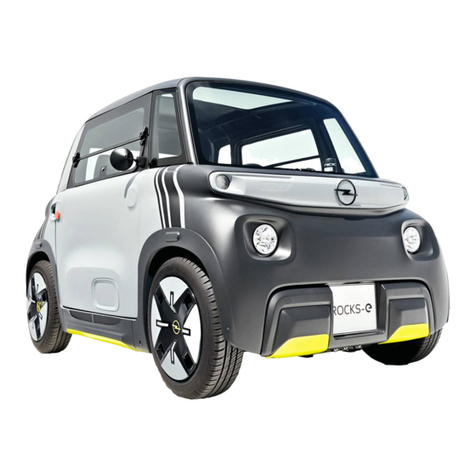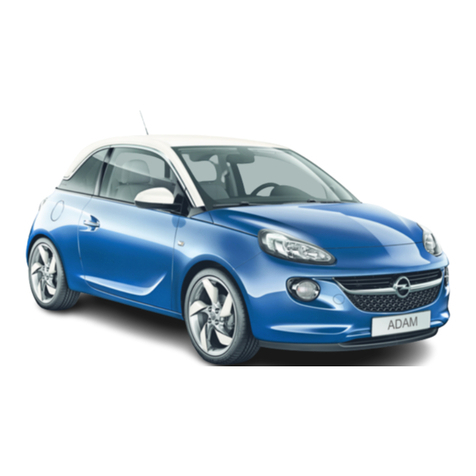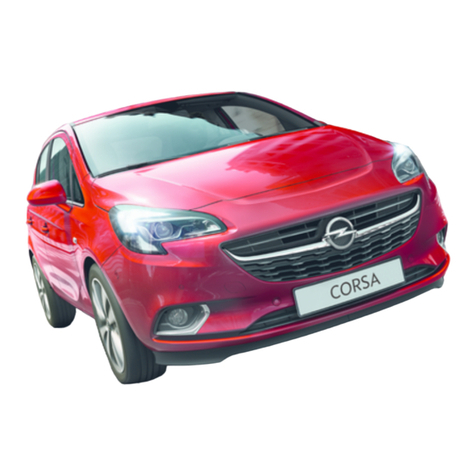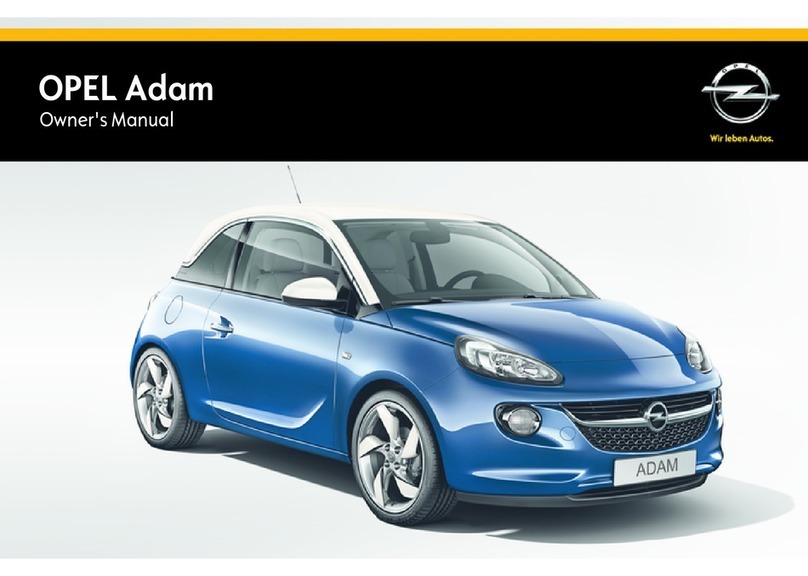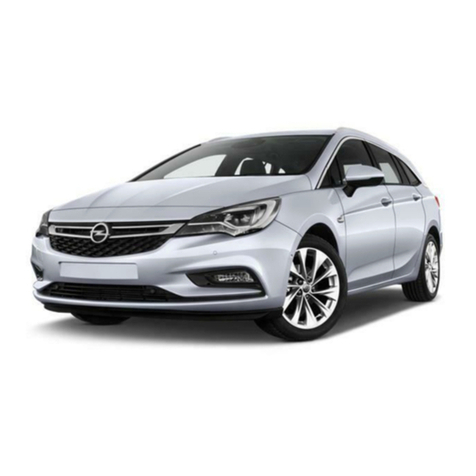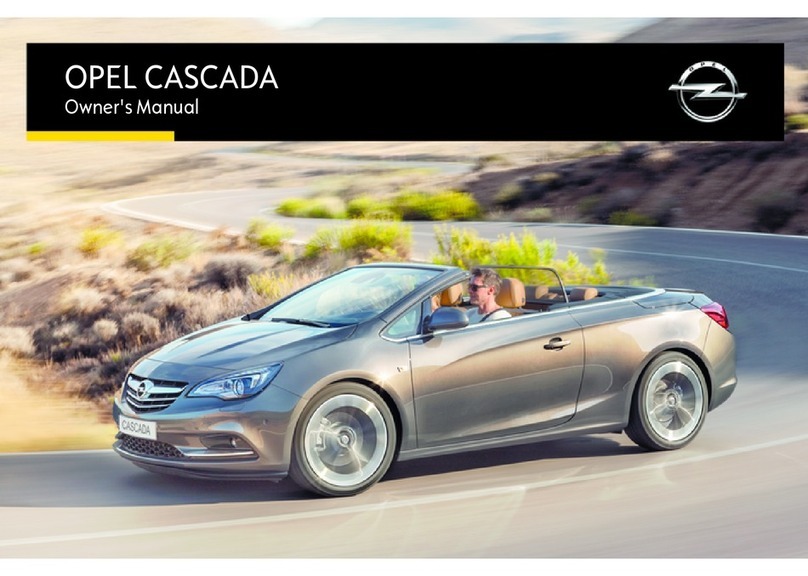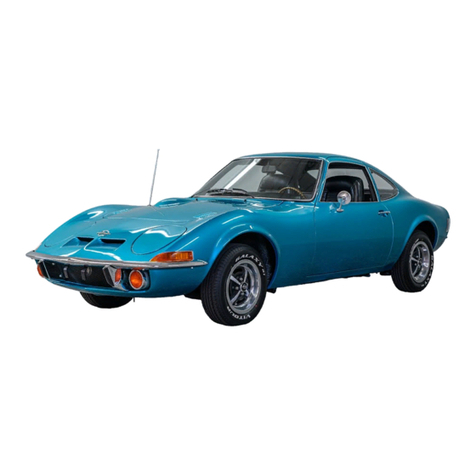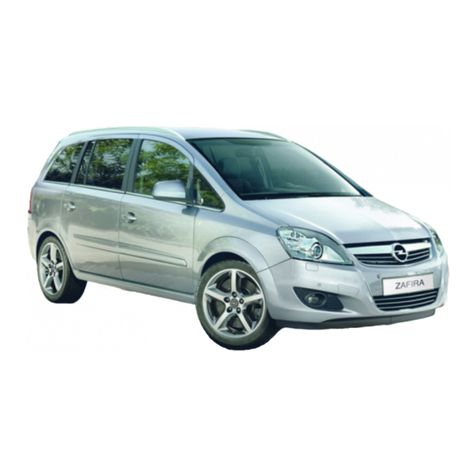
FRONT SUSPENSION 3A- 9
8. Press ball stud out of lower control arm.
Removal Opel 1900
-
Manta
Before raising vehicle, install Hooks J-23697 on re-
spective vehicle side to cross member and upper con-
trol arm. See Figure 3A-7.
1. Raise car and support at rear of front frame rails.
2. Remove front wheel.
3. At the lower control arm ball joint, remove castle
nut cotter pin and slacken back nut so that the thread
can no longer be damaged.
4. With a suitable drift, detach ball joint from steer-
ing knuckle. With jack, lift up lower control arm,
unscrew castle nut and remove Hooks J-23697.
5. Unscrew upper control arm ball joint and suspend
front wheel hub and brake caliper in wheel house. Do
not turn upper control arm ball joint flange, as this
would result in a change of camber.
6. Remove defective lower control arm ball joint
using Tools J-9519 and Receiver J-23754.
Installation GT
CAUTION:
Fasteners are important attachingparts in
that they could affect the performance of
vitaI
com-
ponents and systems, and/or could result in ma&r
repair expense. They must be replaced with one of
the same part numer or with an equivalent part if
replacement becomes necessary. Do not use a
re-
placement part of lesser quality or substitute design.
Torque values must be used as specified during reas-
sembly to assure proper retention of these parts.
1. When pressing the ball joint in place, make certain
the locating notch in the lower rim of the ball joint
matches the alignment reference mark placed on the
lower control arm prior to removal. The notch in the
ball joint bottom plate, identifying the direction of
the elongated slot, must point towards the brake
drum backing plate. See Figure
3A-17.
Alignment
must be within 2 degrees of lower control arm center-
line. If proper positioning of the ball joint is not
accomplished, the result is a limitation of the neces-
sary ball stud movement. If ball stud movement is
limited, an interference between the ball stud and
housing is created, and binding or even fracture may
occur. Replacement ball joints may or may not have
marking notch as shown in Figure
3A-20.
If it does
not have a marking notch, the joint is completely
symetrical and may be installed in any position.
When pressing in ball joint do not press on bottom
plate, but on ball joint housing only.
2. Install dust cap on lower ball joint and fill with
chassis lubricant. Attach dust cap retainer.
3. Press ball joint into steering knuckle. Use
J-
9519-3 as installer and J-21690 as a supporting
sleeve.
4. Install castle nut on ball joint stud and torque to
40
Ib.ft.
Install new cotter pin.
5. Reconnect shock absorber to lower control arm
and torque to 30 lb.ft.
6. Remove spring compressor.
7. Install front wheel, and lower the car.
8. Always check caster and camber after ball joint
replacement.
Installation Opel 1900
-
Manta
CAUTION:
Fasteners are important attachingparts in
that they could
aff’ect
the performance of vital com-
ponents and systems, and/or could result in ma&r
repair expense. They must be rep/aced with one of
the same part number or with equivalent parts, if
rep/acement
becomes
necessary.
Do not use a
re-
p/acement part of lesser quality or substitute design.
Torque valves must be used as specitied during
reas-
sembIy to assure proper retention of these parts.
1. Drive new ball joint into lower control arm using
Tools J-9519 as installer and J-23755 as a supporting
sleeve. Do not strike onto ball joint bottom.
The ball joint is maintenance-free. It is supplied as an
assembly only and cannot be disassembled further.
2. On new lower control arm ball joint, make sure
that the marking groove in the housing bottom in
alignment with the axis of the lower control arm.
Permissible deviation: minus 2 degrees to plus 2 de-
grees.
This is required, to obtain the maximum freedom of
movement of the ball stud in the housing. See Figure
3A-18.
3. Attach steering knuckle together with front wheel
hub and brake caliper to lower control arm ball joint.
Torque castle nut to 54
ft.lbs.
4. Attach ball joint to upper control arm and torque
to 29
ft.lbs.
Always use new self-locking nuts.
5. Install wheel and tighten nuts to a torque of 65
ft.lbs.
6. Lower car and check caster and camber.




